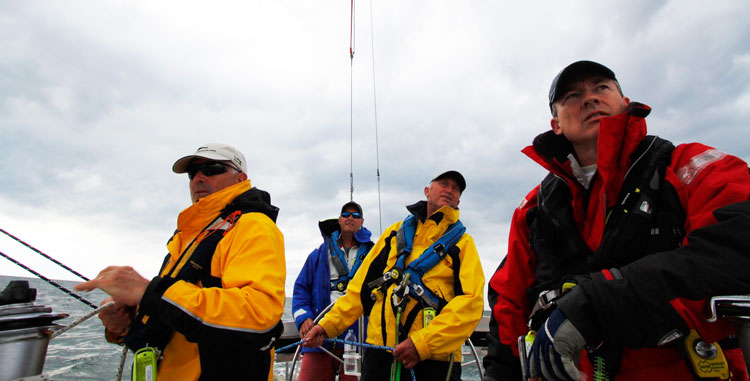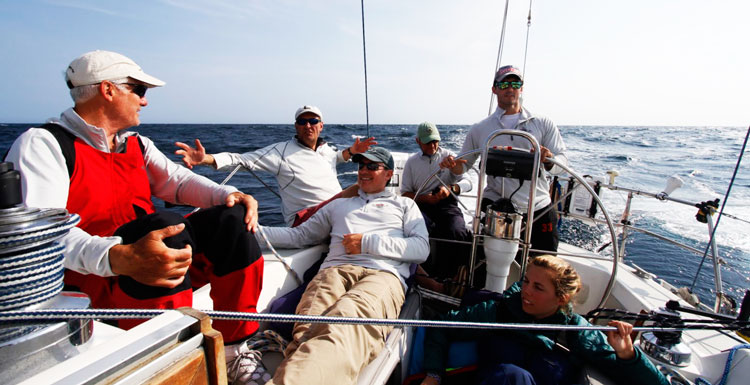
When it comes to readying yourself, your boat, and your crew to sail or race offshore, there’s no such thing as too much preparation. The amount of written information alone about preparing to go offshore can overwhelm a sailor. So, how to go about it? While by no means comprehensive, this three-part series offers suggestions from experts on: how to educate and prepare yourself and your boat for an offshore passage; how to improve your seamanship through plentiful practice and drills; and what skills and gear to bring with you when you finally cast off the dock lines.
When it comes to training sailors to go offshore, the U.S. Naval Academy has a proven track record of turning young men and women into capable ocean-going sailors. The key, said Renee Mehl, program director for the USNA Offshore Sail Training Squadron (OSTS), is preparation: making sure the boat has the proper functioning equipment for transiting the ocean safely and training the crew to sail the boat well in a variety of different conditions.
For OSTS, training begins in the classroom. Ground school training incorporates the U.S. Sailing-sanctioned Safety at Sea seminar that USNA and the Marine Trades Association of Maryland host each spring. Basic navigation with chartplotting and taking fixes, a thorough review of the Rules of the Road and the COLREGS, and radio communications also figure into classroom training.

Fortunately, those of us who are not Midshipmen can follow a similar protocol and benefit from the instruction available through the Safety at Sea seminar (at USNA April 1-2). The two-day seminar covers topics such as seamanship, heavy weather, storm sails, care and maintenance of safety equipment, damage control and repair, hypothermia and first aid, weather forecasting, life rafts, lifejackets, man-overboard prevention and recovery, and USCG search and rescue communications. The Annapolis seminar also features live man-overboard recovery demonstrations, and weather permitting, a demonstration of a live USCG helicopter air-lift. The second day involves hands-on training with life rafts, lifejackets, firefighting, and more.
Additionally, the Chesapeake region offers opportunities for hands-on classes in many areas of seamanship valuable to an offshore sailor. In Annapolis alone, students can take courses on the Rules of the Road, coastal navigation, first aid, marine weather, diesel engine, and electrical systems troubleshooting. From schools specifically dedicated to seamanship to local chandleries throughout the Bay area, a wide range of learning opportunities is available.
Preparation for offshore sailing, however, runs more than just seminar-deep. Equipping a boat for an offshore passage entails understanding many complex systems and preparing for emergency situations. U.S. Sailing and World Sailing (formerly ISAF) both publish guidelines and checklists to help skippers evaluate whether a vessel has the right equipment and set-up to make an overseas passage.
Following classroom coursework, Midshipmen take to the pool for training on potentially life-saving emergency skills. In the water, the fit of PFDs is tested. Midshipmen learn what it takes to climb into a life raft in full gear. Practice includes tossing heaving lines and horseshoe buoys and retrieving them, among other skills.
All of this regimen takes place before anyone actually climbs on a sailboat and leaves the dock. Once some basic seamanship skills are honed off the water, then the on-the-water training begins. And on-the-water training for any crew on an ocean-going vessel means practice, practice, practice. More on that in the May issue of SpinSheet!
~By Tracy Leonard




